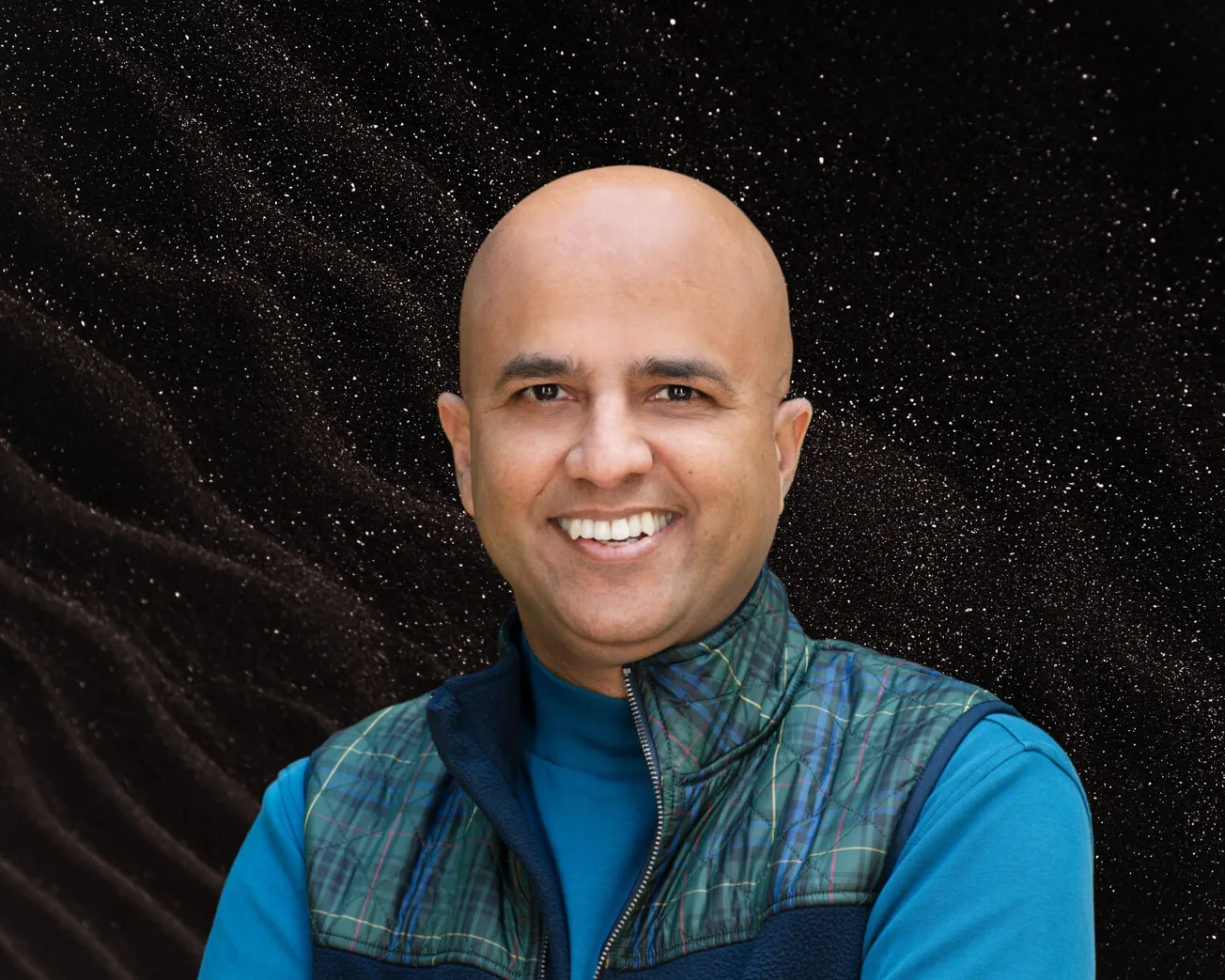Table of Contents
Rajesh Swaminathan, Partner at Khosla Ventures, sat down with Onyx for a feature-length interview.
Could you start by giving us a bit of background into your career journey and what led you to become a partner at Khosla Ventures?
My background is in chemical engineering, notably material science, plus Bell Labs, business school; then I worked with a lot of startups in the optical, high‑tech world. I’ve been investing in climate tech and deep tech for about 17 years. Before Khosla, I headed Applied Ventures - the venture arm of Applied Materials - for a while. Around six years ago, I made the jump to Khosla Ventures.
Why KV? Well, I’ve known the KV team for nearly two decades - even when I was at business school. They were the only firm that kept investing in clean tech 1.0, when most others walked away. That took guts. I had immense respect for what they did. When an opportunity finally arose, I thought: This is the only firm I’d consider joining. And, six years in, I’m still thrilled - not just by what we’ve done, but by what we’re continuing to do in cleantech and climate tech.
Why is climate tech so important to you?
It’s an existential crisis - governments may come and go, but global warming is scientifically proven. We’ve got coal plants, transportation that is burning fossil fuels, cement and steel - all pumping out massive amounts of CO₂. Somebody has to step up! Technology is the only way to make an impact nonlinearly… you can’t just green‑tape around the edges. Venture capital is probably the best way to bring fundamentally new technology into markets at scale. This is the crisis of our time, and it demands high‑conviction, deep‑tech responses.
How do you view venture capital’s role in investing in climate?
Six years ago, we published an article saying we’d target twelve areas within climate tech. Step one is: decide which sectors are ripe for disruption. Step two: within those sectors, figure out which technologies are going to be the most disruptive. Step three: identify the entrepreneurs building those solutions. Then invest accordingly.
But for us at Khosla Ventures, the biggest part of the job begins after the check is written. From that point on, you shepherd these companies over years - five, ten, even fifteen years - helping to coach them from idea, to tech, to product, and, ultimately, into a market‑changing solution. Our job is not just to back you - it’s to walk with you as you build.
How do you determine whether a startup is truly disruptive?
It starts with the impact. We're talking about a 10× impact to change the world in a big way. We’re not so interested in incremental progress. You ask: is this tackling the biggest pain point in the sector? Are the consequences of success worth it?
Next, you check: is the technology meaningfully differentiated? Do they even have IP? Are they going to be the solution that everyone looks towards? That’s critical!
From there, other factors come in: time‑to‑market, barriers to entry, and infrastructure availability. But these still sit under that impact‑first lens. We’re not in it to greenwash; we don’t want to invest in fifty areas just to feel good. We focus narrowly - the highest impact items within that narrow filter.
We have a little shorthand for it - we say we're hunting for “the twelve entrepreneurs that will save the world,” or what we call the “12 instigators.” That kind of specificity and disciplined filtering is how you find truly disruptive startups.
You mentioned “consequence of success” earlier - can you explain that a bit more?
Absolutely. Even high‑impact ideas take tremendous work to build. When you try to figure out whether to invest, you ask: if this succeeds, is the result worth all the effort? That is the consequence of success. If success doesn't justify the effort, what's the point? That question helps us focus only on the highest‑impact problems that are worth tackling.
Are there KPIs you track in your sustainability investments?
Definitely, a few key areas come together. Picture a Venn diagram; the sweet spot lies at the intersection. The first is a 10× impact - not incremental. The second is technical differentiation - a real IP with defensibility. The third is the ability to leverage existing infrastructure - manufacturing, distribution, and resource access. The fourth is what our founder Vinod Khosla calls the “Chindia cost” competitiveness - can it work without subsidies, even in India or China? And finally, team capacity - do they have the DNA to attract the people they need to scale?
That last one matters, because we often invest at pre‑seed or seed stage. Founders may be world‑class, technically, but haven’t built a company before. We ask: can they evolve? Can they scale the team with the right hires at the right time?
It’s these five circles converging that forms the sweet spot onto which we zero in.
What intangible founder qualities do you look for?
We focus on intellectual rigor, intellectual integrity, and, most of all, the ability to learn quickly. Climate tech is ultra‑interdisciplinary; think fusion, semiconductors, power electronics all piled together. Founders need conviction, but also curiosity: the willingness to test, and iterate, fast.
They don’t need to be economists. But do they care about the techno‑economics of their solution? Will they stress‑test the assumptions behind their own cost model? If they’re ignorant - or dismissive - of that side, that’s a red flag.
Once you invest, how exactly does Khosla Ventures support startups?
There are four big areas. The first is recruiting - we jokingly call ourselves a “glorified recruiter.” Technical founders are brilliant on the bench but might not know when to hire the Chief Commercial Officer or VP of Engineering. We help bring them in at just the right time. It's that important - we always say, “the team you build is the company you build.” We also offer staged de‑risking - we’re not just VCs; we’re venture assistants. We help founders design step‑by‑step validation roadmaps, starting with the riskiest tech assumptions. Back in 2021-22, we saw too many companies raise big rounds on paper promises. We guide companies through a careful, technical, milestone‑driven approach. There’s a method to the madness.
It’s easy to build tech and sell it off to big players, but often, the tech just gets swallowed and subsumed. We push our founders to own their IP, build defensibility, and capture the upside. Licensing a technology into a JV structure in some areas is fine, but only if it leads to value creation and value capture.
There’s also a huge value in our deep advisor network - we can bring in people like Shuji Nakamura, the Nobel laureate who invented blue lasers, to help with technical diligence. That kind of access elevates early teams, and even becomes a recruitment engine later. It offers both technical answers and personal credibility.
VC is often said to be a power‑law business - nine failures and one huge win. Is that accurate?
Yep, we lean into that. The power law is real: put capital behind risky ideas knowing that a single success can cover the rest. Fusion is a great example - it’s risky, but if it works, it’s transformative.
In climate tech, there are probably six or seven single points of failure - big ones are the fundamental science, regulations, business model viability, and team strength. Our job is to de‑risk those top risks early. We test the core science in the seed stage. If it fails, we’ve learned quickly and efficiently. If you raise big too early, it becomes too big to fail or too big to pivot, and that's often the worst outcome.
Where are your portfolio companies located? Is it still mostly Silicon Valley? And is California still the place to be for innovation?
We’re global - US, Europe, India, Japan. But if you count volume, the US leads in foundational innovation. We don’t bias by zip code, but the US remains the powerhouse in climate deep tech.
It’s complex. California still births big names - Fortera in cement; Verdagy in hydrogen; Mainspring in energy generation - but innovation is shifting. Houston, Dallas, and other hubs are gaining momentum. That said, the US still holds a technology lead over China in many areas. The challenge is not invention - it’s scale. I’ve seen four industries: telecom, semiconductors, solar, and batteries - where the US invented, and then China scaled. That must not happen again.
We need serious public‑private alignment. For instance, Commonwealth Fusion Systems recently did a landmark deal with Google. We backed them early in 2018-19 and continue to invest. China is also pursuing fusion, so, to stay ahead, the US must double down - federal funding, infrastructure, policy stability. Geothermal, nuclear - these are 24/7 base‑load power sources, and deserve long‑term focus.
Which sectors in your portfolio are primed to scale in the next 5–10 years?
Geothermal tops the list - we’ve been investing for 20 years. We’ve now consolidated our geothermal portfolio into a single company, with a big announcement coming this year. Geothermal and fusion were the top two areas in our early “twelve focus areas” piece - because they’re the only true 24/7 baseload power options.
Solar and batteries are great, but they don’t fully address intermittency cost‑effectively. Geothermal at 400 °C, though - now, that’s a game‑changer. You increase power output tenfold. That’s massive: imagine cutting the cost by four‑fifths, compared to current projects.
Fusion is on the same track. We expect the first commercial plants within the next decade. Once you have “copy‑exact” factory designs, like in semiconductors, the technology scales fast globally.
Another huge area: construction, with cement and steel. They’re each 4 - 6% of global CO₂ emissions. One company, Fortera, can retrofit existing cement plants and increase throughput by 44% - immediate economics plus emissions reduction. That’s the kind of innovation we’re looking for - not just clean tech, but profitable clean tech.
Finally, what’s one piece of advice you’d share with founders - especially those new to the VC world?
There’s one nugget I always share: pick value‑added investors over valuation! It sounds simple, but it’s often overlooked. Whether your seed valuation is $60 million, or $150 million, it doesn’t matter. What matters is who’s going to actually help you get to $1 billion. Reputation, technical domain knowledge, deep networks - those are worth far more.
Especially in hype cycles, founders chase big checks from "tourist" investors - ones who aren’t committed to climate in the long‑term. But climate is a marathon, not a sprint. Find partners who are committed for the long haul. That’s the difference between building a billion‑dollar company and burning through cash.


